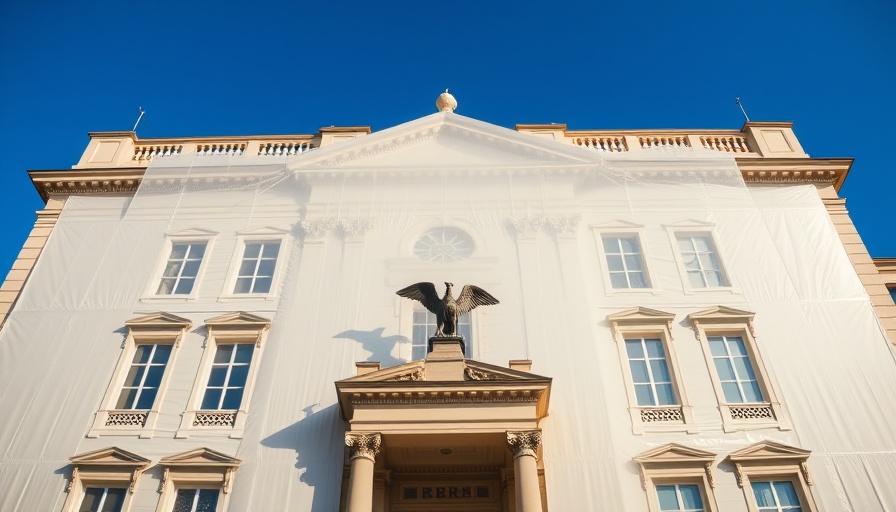
A Design Decision Divided: Glass vs. Marble at the Fed
The Federal Reserve's ongoing renovation has sparked a notable debate over design choices that directly affect both aesthetics and funding. While the Fed's architects envisioned a modern, transparent structure using glass to symbolize the institution's commitment to openness, the input from Trump-appointed members of a local commission swayed the decision towards more traditional and costly marble.
Understanding the Financial Implications
The cost of the renovation has already ballooned to an astonishing $2.5 billion, with notable overruns raising eyebrows across political parties. Interestingly, it appears the lavish use of marble, specifically premium Georgia marble as urged by presidential appointees, has contributed to this financial burden. Insights from experts like Alex Krieger suggest these design choices may inherently increase costs, a point not lost on the administration aiming for fiscal conservatism.
Transparency and Accountability: A Changing Narrative
The narrative surrounding Federal Reserve Chair Jerome Powell has shifted as critics highlight these expenditures. The connection between marble finishes and perceived financial mismanagement reflects broader questions about transparency in government spending. As stated by malevolent voices in the White House, this monumental overhaul opens Powell up to critiques of extravagance, notwithstanding the contrived nature of their argument against him. Powell maintained in a recent response that the decision for using domestic marble adheres to regulatory inquiries and aims for enhanced energy efficiency.
The Future of Federal Design: Balancing Tradition with Innovation
This scenario raises essential questions about the future of architectural decisions in public buildings. Will policymakers continue to impose historicist styles that cost taxpayer dollars, or is there room for innovation in design practices? As trends in enlightened architecture lean towards sustainability and transparency, public institutions must grapple with these dynamics to reflect modern sensibilities and fiscal responsibility. Resolving these tensions will determine whether future federal buildings symbolize progress or succumb to maintaining outdated traditions.
 Add Row
Add Row  Add
Add 



Write A Comment